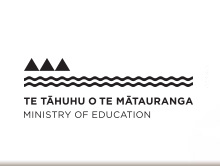I Mua i te Pānui Pukapuka
Before Reading
1. Ohia manomanotia te uhi o te pukapuka nei. He aha te tikanga o te tapanga nei? Ki ōu whakaaro he kōrero tēnei e pā ana ki te aha? Kua rongo koe i tēnei ingoa, Tūhoronuku? He aha te manu aute?
Brainstorm the cover of the book. What is the meaning of the title? What do you think this story is about? Have you heard this name Tūhoronuku? What is a manu aute?
2. Ohia manamanotia me ngā ākonga tō rātau mōhiotanga e pā ana ki te rohe o Ngāpuhi. Whakaritea ō rātou ake mahere. Tautohua ki te mahere te rohe o Ngāpuhi. Ko wai ētahi o ngā hapū? Whakaingoatia ētahi o ngā wāhi o te rohe nei me te whakaatu kei hea aua wāhi rā. He ākonga nō Ngāpuhi? Tautohua nō hea rātou?
Brainstorm what the students know about the Ngāpuhi region. Students prepare their own maps. Identify where Ngāpuhi area are located on the map. Who are some of the sub-tribes? Name some of the places of this district and identify where those places are. Are any students from Ngāpuhi? Identify where in Ngāpuhi they are from.
3. Whakamārama atu ki ngā ākonga ngā āhuatanga o te tuhinga tūhono. Whakamāramahia ētahi āhuatanga o tēnei momo reo tuhi, ā, whakamārama atu i ētahi tauira o ēnei āhuatanga. Anei ētahi tauira: te reo tohu wāmua, te reo raupapa, te reo tautoru, te reo tūhono i te take me te pānga, te reo tapa, whakaheke kāwai, reo huahuatau.
Explain narratives which express collective identity to the students. Explain some of the attributes of this language style and give them examples of these attributes. Some examples are: past tense expressions, sequencing expressions, third-person point of view, expressions of cause and effect, naming language, language used to describe a line of descent, and metaphors.



